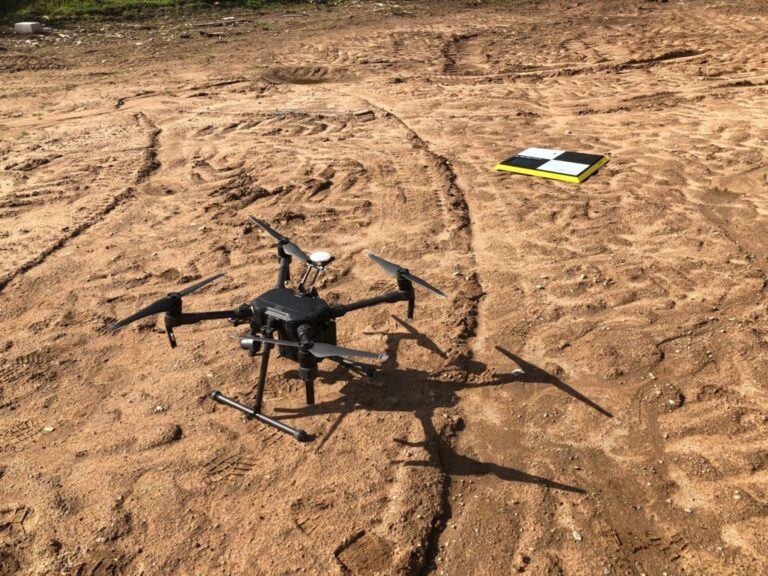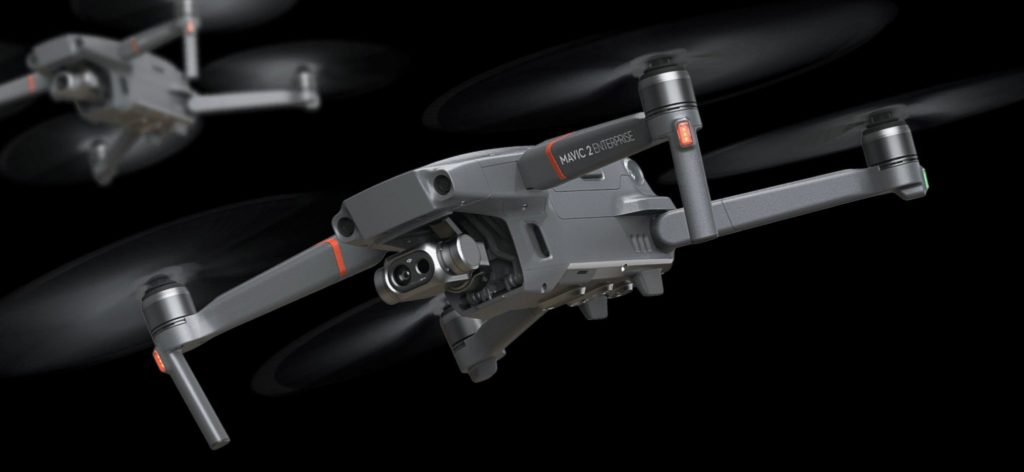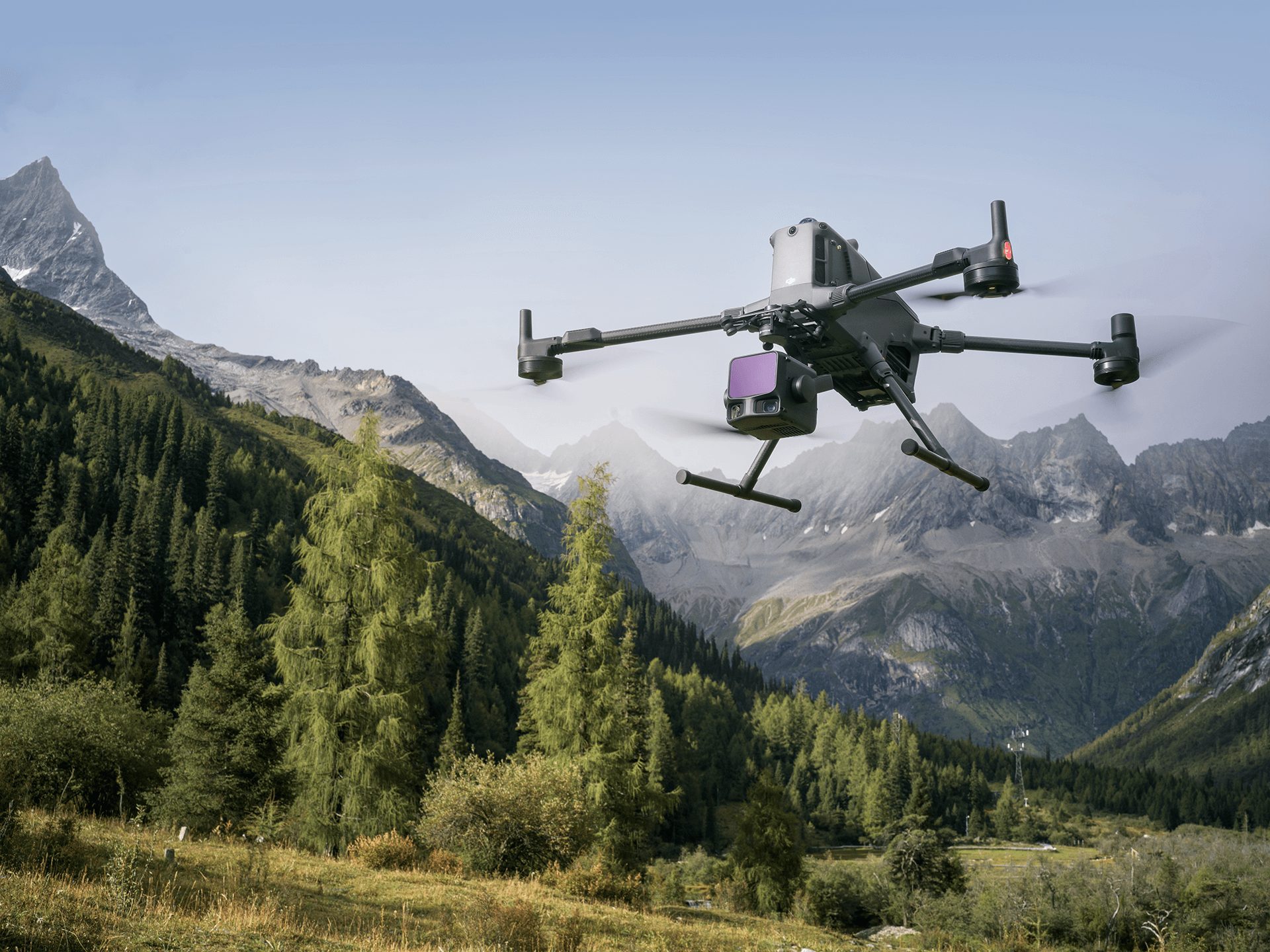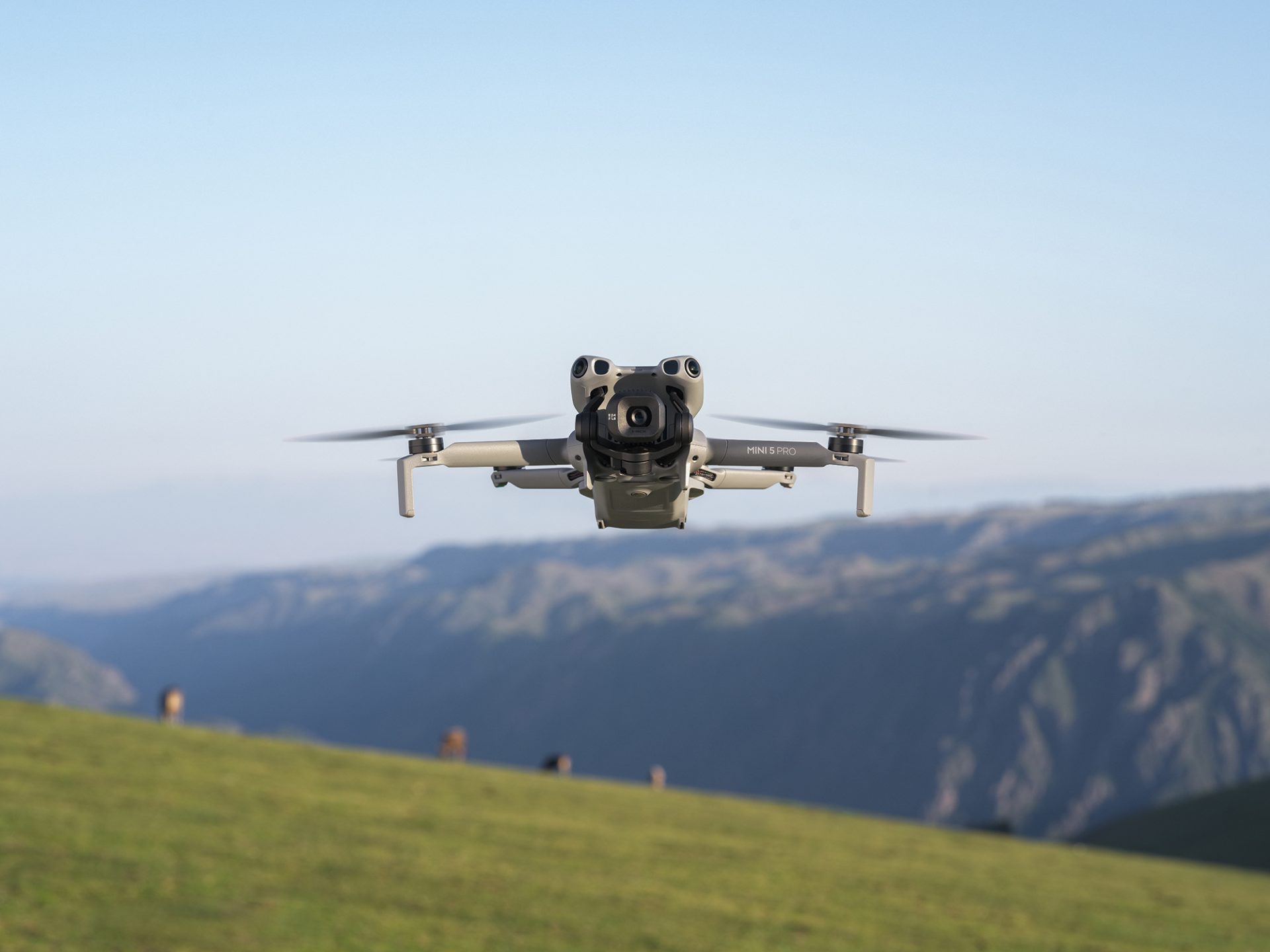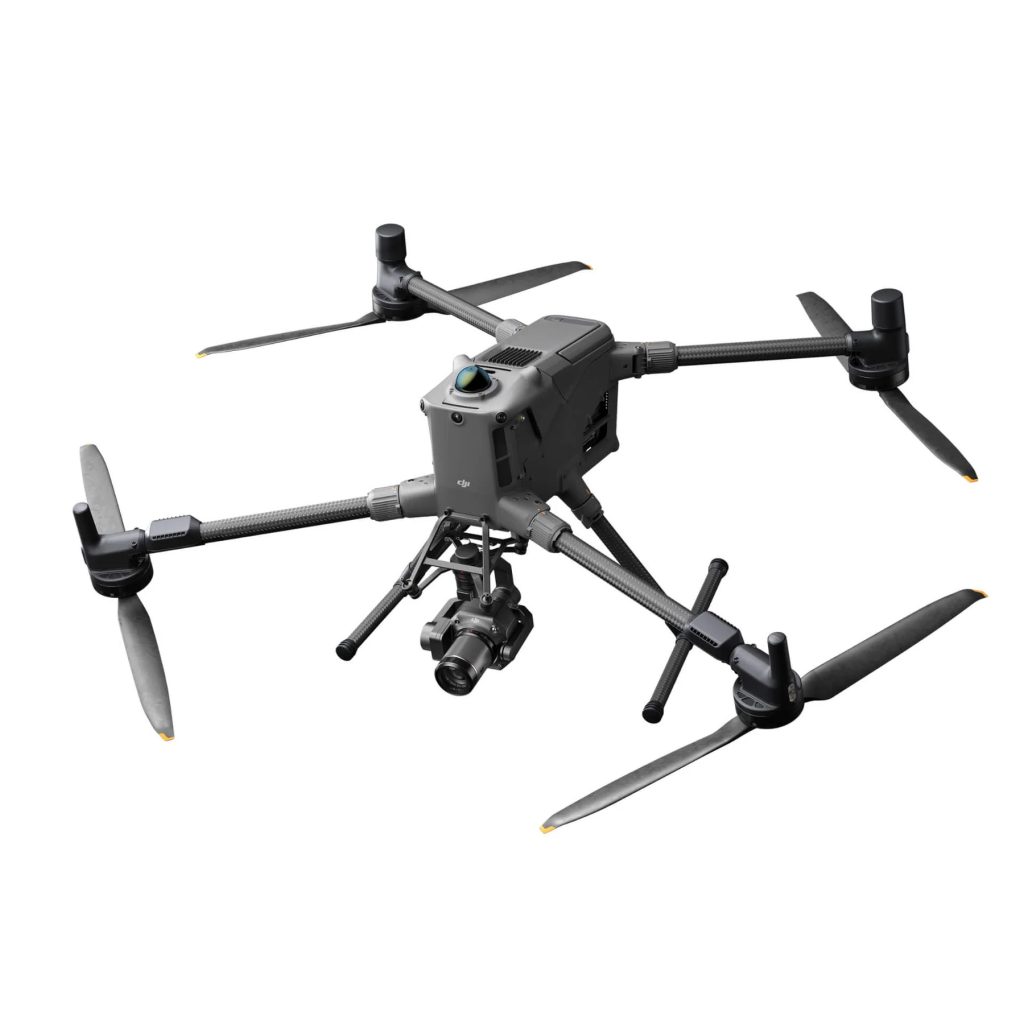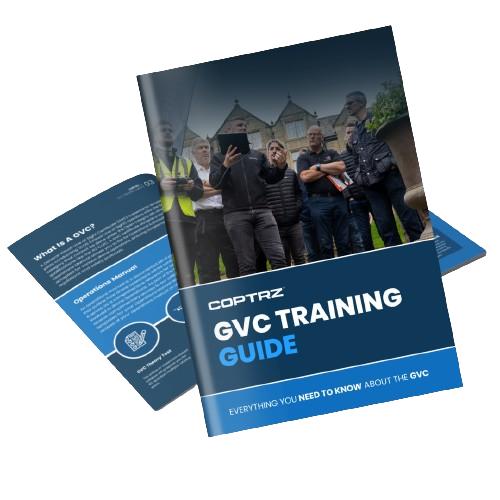A2 CofC – Drone Training Course
If you didn’t know already, the drone laws in the UK changed on the 31st of December 2020. The new drone regulations can be confusing to get your head around what has changed, fear not…Coptrz have got you covered. We are here to support you through these changes and make sure you’re clued up on how to take your drone knowledge to the next level. Let us talk you through the A2 CofC course and what it means for you.
In today’s post, we are going to talk you through the A2 Certificate of Competency, what it is and why you need one.
Our Coptrz Academy trainers Harry and Duncan give you a brief overview of the course and what you need to do to obtain your A2 CofC in this short video:
What is the A2 CofC?
In order to operate in the A2 subcategory of the Open Category under the new UAS regulations, you need to have an A2 CofC (certificate of competency).
There are a basic set of regulations for flying drones within the UK. Operating within these limits will ensure you remain in the ‘Open Category’, meaning that you don’t need an authorisation from the CAA to fly. If you intend to operate outside any of these limits, you must first obtain an Operational Authorisation, which falls under the ‘Specific Category’.
What do I need to do to get my A2 CofC?
The A2 CofC course consists of 4 theory modules:
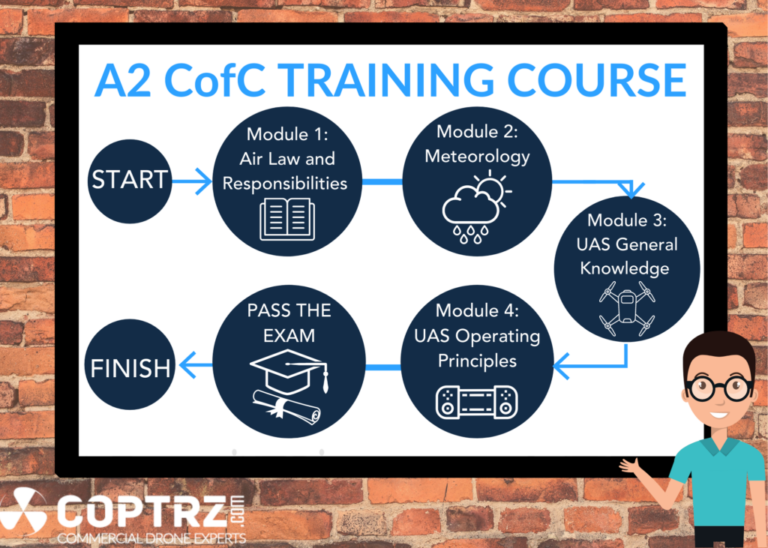
Module 1: Air Law and Responsibilities
- The legal stuff. Develop a strong understanding of the rules and regulations around flying UAV in the UK, learn your responsibilities as a UAV operator, how to report accidents and more.
Module 2: Meteorology
- More commonly known as the weather and a major part of any UAV operation.
Module 3: UAS General Knowledge
- Knowing how your aircraft operates is essential for safe flying. This module teaches you all about the principles of flight and how to know if your drone is safe to fly.
Module 4: UAS Operating Principles
- Bring all of your knowledge together in this final module about VLOS, identifying congested areas, collision avoidance and more.
Self Study Practical Flight Training
After you have completed your theory, you must complete some practical flight training. This is done under self-monitored conditions with a workbook to keep you on track. COPTRZ are looking for more than 4 hours of flight time since enrolling onto the A2 CofC course.
You are required to self-declare your experience. Once you have your A2 CofC it allows you to operate appropriate drones under the A2 and A1 Transitional subcategories of the UK CAA Open Category.
There is a short closed-book exam associated with each module. These are multiple choice and are designed to reinforce the learning from the course. The pass mark for each exam is 75%.
Your A2 CofC is valid for 5 years from the point of issue.
You will be learning at Coptrz Academy, which gives you exclusive access to our Coptrz Pilot Group, where you can connect with experienced Coptrz Alumini.
Why do I need my A2 CofC?
If your aircraft is between 250g and 500g MTOM (like the Parrot Anafi) then you will need to hold an A2 CofC and then you will be able to fly close to uninvolved people as long as you don’t overfly them.
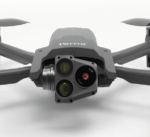
If your aircraft is between 500g and 2kg MTOM (like the DJI Mavic 2) then you will need to hold an A2 CofC and you will have to maintain a 50m separation distance from uninvolved people.

What do I need to do to prepare for my A2 CofC theory course?
In preparation for your A2 CofC theory course, you must have a Flyer ID and Operator ID from the CAA and you must self-declare your practical skills. These skills include checking your flight area is safe, setting up your drone properly, flight skills and dealing with emergencies.
*If you fly a drone that weighs less than 250g but is not a toy or fitted with a camera you will now need to obtain a operator ID under the new regulations (e.g the mavic mini).
What happens if I have a PfCO, can I still operate my drone?
As part of the new rules, the standard permission – known as a PfCO (Permission for Commercial Operation) – will be replaced by an Operational Authorisation. An Operational Authorisation will be needed for drone flights within the new Specific Category – aimed at the majority of enterprise drone pilots, and those that cannot meet the requirements of the Open Category
If you’re a pilot with a valid PfCO, there is no need to panic, your permissions haven’t suddenly stopped being valid.
Rather, it will continue to be valid until its expiry the terms of your operating conditions will remain mostly unchanged, for the elements that have changed the CAA have released additional information addressing those changes found below – came into effect on December 31, 2020, and run until March 31, 2022.
A copy of this authorisation, along with a copy of the relevant operating permission document (ie the standard permission/PfCO) must always be carried by the remote pilot when flying under that permission.
Operators with a current and valid PfCO must ensure they have a valid Flyer ID and Operator ID, obtained as part of the CAA’s drone registration service.
Got any more questions?
If you have any further questions about getting your A2 CofC qualification, or want to know more about learning at Coptrz, get in touch today.
You can also download our free ebook with all of the information you need to know about the new drone laws here.
Download our FREE GVC Training Guide
Learn everything you need to know about becoming a drone pilot with our GVC training guide.
- Get a full course roadmap to understand every step of the journey
- Contains clear answers to all of the frequently asked questions
- Get a transparent and comprehensive breakdown of course costs


